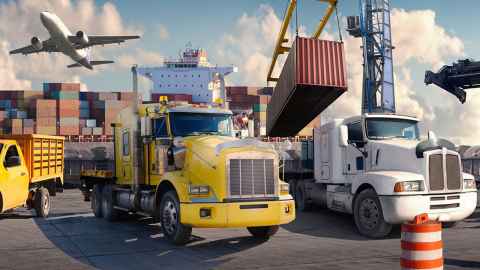Transport planning has gone off the rails
19 April 2024
Whatever political party is in power, we have a serious problem developing realistic projects in this country says Timothy Welch

The famed American architect and urban designer Daniel Burnham once said, “Make no little plans. They have no magic to stir men’s blood!” Burnham wouldn’t have been referring to the transport plans in Aotearoa New Zealand over the past five years; projects so big they hadn’t the credibility to stir anyone’s blood.
Setting aside opinions on the type of transport infrastructure or which political party is in power, we have a serious problem developing realistic projects in this country.
Long before National asked Waka Kotahi NZ Transport Agency to investigate a long tunnel through Wellington, several of the Labour governments’ big transport proposals had been received with considerable derision.
Such as the cycle and walking way proposed on Auckland’s Harbour Bridge, known as the SkyPath. When that project, with a relatively small cost of $240 million, was summarily cancelled after years of planning and consenting, then-transport minister Michael Woods rushed to put forth an absurdly expensive dedicated bridge, the SkyPath replacement proposal, which was more than triple the cost of Skypath at $785 million. People on both sides of the political spectrum were quick to distance themselves from the idea, rendering it dead before it even started.
Woods followed up on the bridge proposal with a re-envisioning of light rail for Auckland, replacing what would have been an affordable surface rail network with an estimated cost of $3.4 billion (in 2018 dollars) with a tunnelled line to the airport carrying an estimated cost of $14.6 billion (in 2023 dollars). That project was a pipe dream from the beginning too, given its enormous price tag and lack of support outside the minister’s office. As borehole testing later revealed, historic basalt lava flow deposits in the line’s path would have made it incredibly difficult and even more expensive to build.
Then, in Labour’s final year of office, Waka Kotahi released a slate of options for a new Auckland Harbour crossing, with each option much more expensive than plans put forward in previous decades. The plan that was finally selected was the most expensive, with a price tag of around $35 billion.
These headline-grabbing proposals, the multiple Auckland Harbour crossings, the tunnelled light rail, the East West Link and the Long Tunnel are, at best, over-blown vanity projects designed to keep transport ministers and projects in the news cycle.
When the National-led coalition Government took office in 2023, it quickly cancelled projects around the country. Big transport projects aren’t necessarily extravagant; some cancelled projects were modest and well-reasoned compared to the previously mentioned high-priced ones.
One of those projects was the Interislander ferry upgrade, which would have provided desperately needed rail and passenger upgrades along with climate change protection for the next 100 years. Yet the $3 billion cost was seen as too expensive by the new Government.
It also cancelled both Wellington and Auckland light rail, with hefty price tags cited as the reason for their demise. But then the same Government rolled out its big-priced projects, starting with the resurrection of the Roads of National Significance (RONS) that had been previously dispensed with due to high costs and low benefits. This included the East West Link, a highway expansion project that in 2017 was crowned the World’s Most Expensive Road at $327 million per kilometre – nearly $2 billion in total. The cost today is likely far higher.
And now we have the Long Tunnel, a proposed 4km four-lane road cutting under Wellington from Terrace to Wellington Road to save some commuters a possible 15 minutes of travel time. This is apparently a better idea than those floated to cut through Mt Victoria and reduce travel times by up to three minutes for $1.4 billion. The price tag for the Long Tunnel is unknown, but it’s likely to be in the $10 billion range.
These headline-grabbing proposals, the multiple Auckland Harbour crossings, the tunnelled light rail, the East West Link and the Long Tunnel are, at best, over-blown vanity projects designed to keep transport ministers and projects in the news cycle. At worst, they take away the ability of agencies to plan for the future and develop real and desperately needed infrastructure improvements. A genuine and very expensive opportunity cost is associated with these unrealistic plans. This cost is already accruing for people travelling in nearly every city in this country and will only grow with time.
We should be ambitious in what we want to achieve as a nation and make big plans. But that ambition should be followed with achievable projects that don’t simply become political fodder for the next election cycle. If we can’t do that, we’ll never make the progress needed to move forward as a nation.
Dr Timothy F Welch is a senior lecturer in the School of Architecture and Planning, Faculty of Creative Arts and Industries.
This article reflects the opinion of the author and not necessarily the views of Waipapa Taumata Rau University of Auckland.
This article was first published on Newsroom, Transport planning has gone off the rails, 19 April, 2024
Media contact
Margo White I Research communications editor
Mob 021 926 408
Email margo.white@auckland.ac.nz